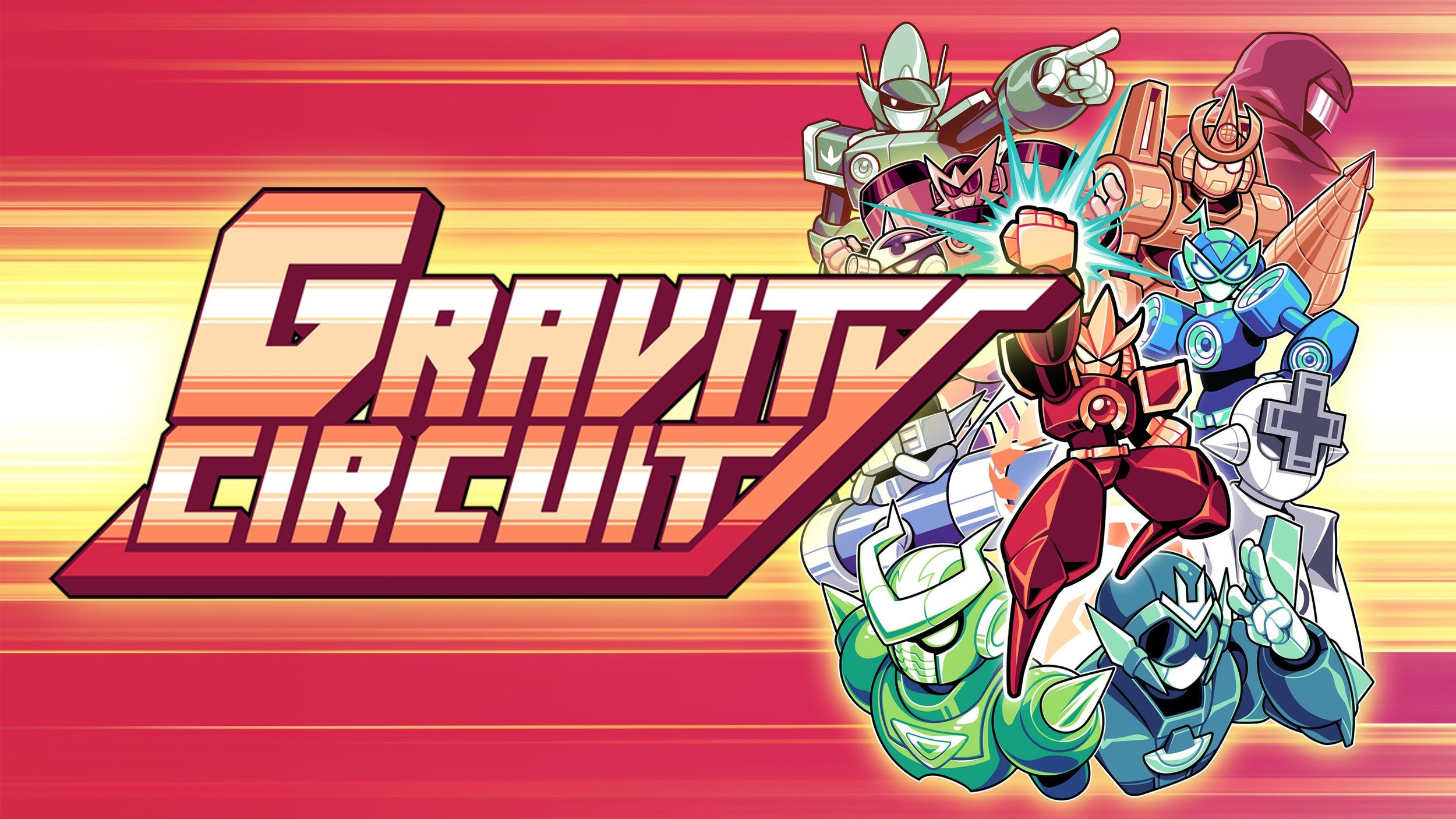Gravity Circuit review
Gravity Circuit, developed by Domesticated Ant Games and published by PID Games, is a 2D action platformer in a similar style to Mega Man, but with a much heavier emphasis on melee action. You play as a super-powered robot, Kai, fighting against an army of robots to save the world from an evil mastermind. But instead of using a megablaster, Kai fights with his fists and feet, and grapples for good measure.
The gameplay here just feels excellent. Smooth and responsive control makes platforming fun. Melee combat mechanics are nice and crunchy, so every punch and divekick feels satisfyingly weighty. And then you have unlockable super moves (called Burst Techniques) as well! But where the combat truly excels, in my opinion, is in its grapples and throws.
Kai has a grappling hook, which can be used to latch onto the ceiling and swing through environments, Super Castlevania-style. That same grappling hook can also be used to snatch objects out of the air. In the case of a stunned enemy, the hookshot acts like a grapple in a fighting game, snagging the robot’s body and pulling it back into Kai’s grasp. From there, you can throw the enemy like any other object, and it will do some pretty good damage on impact. By grappling enemies and chucking them into other enemies, you can dispatch a whole mob of foes pretty quickly. And honestly, it just kinda rules.
Shortly after Gravity Circuit was released, an update added a second button for the grappling hook, the new input automatically firing the hookshot up diagonally. This was a great addition for accessibility, making platforming segments much easier to execute with precision.
Your controller layout is fully customizable, allowing you to remap buttons however you’d like…which is something I feel that pretty much all games should do. For my configuration, I left the normal grapple button on ZR(R2) but put the diagonal grapple button on R(R1). That way, even if I confused the two inputs, I wouldn’t be far too off. Instead of the R being used for Burst Techniques (supers), I moved that to the A button, which felt more natural to me anyway. Finally, instead of using one of the L buttons to run, I inverted the Run mode in the options to simply make Kai run by default. (I’m really starting to come around to the idea that running by default in 2D platformers is usually the correct choice.)
Narratively, the game has an actual story that is surprisingly compelling, even though it in no way needs to be there. I found myself actually interested to see how everything played out, and it was surprisingly satisfying to see the story through.
Character designs are very cool, with fun Mega Man-esque theming for the robot masters. It’s worth noting that there are no flesh-and-blood humans in the game world. Literally every character in the cast is a robot, including the dogs.
Pixel art is top-notch across the board, maintaining a consistent limited-palette look throughout. While stage backgrounds are great, it’s the deftly animated character sprites that truly impressed me the most. Overall though the entire visual package just looks fantastic.
Difficulty is well-balanced throughout; probably one of the best-tuned indie games I've played in a long while, difficulty-wise. There are some tricky platforming moments in certain stages, and reasonably some tough boss battles, but the challenge always feels manageable. Especially when you can change up Kai’s loadout on the fly, there’s usually multiple options to try.
The game’s Chip System—which allows you to adjust and augment Kai’s stats and attributes—is a very clever way to let players tackle challenges in their own way. In later levels, I found myself equipping chips to reduce environmental damage during the stage itself, only to swap things out later for the boss fight. Chips reducing damage taken from enemies—or boosting Kai’s damage output, or increasing the speed and/or range of Kai’s attacks—went a long way in making boss fights easier. And importantly, any chips you decide to use, or not use, is entirely up to you.
The game design overall feels shockingly full-featured and generous. Especially in the final levels, you are getting more game to play right when you’d think things are wrapping up. And what’s on offer here is of such a high-caliber that more game is a genuinely welcome surprise. By the time the credits rolled, I found myself wanting more. And thus, this is one case where I’m definitely gonna play the New Game+.
To cut to the chase, Gravity Circuit is amazing. The beat’em up platformer gameplay is so solid, I’d dare call this an instant classic. It’s at least the best feeling action platformer I’ve played since Katana Zero. (And honestly, it might edge that one out in terms of sheer fun factor.) If you like Mega Man, you should give this game a try. If you like beat’em ups, you should give this game a try. If you like 2D action platformers, you should give this game a try.
Basically, you should just definitely play Gravity Circuit.









